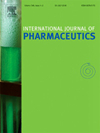投稿信息
稿件收录要求
The International Journal of Pharmaceutics provides a medium for the publication of innovative papers, reviews, mini-reviews, short communications and notes dealing with physical, chemical, biological, microbiological and engineering studies related to the conception, design, production, characterisation and evaluation of drug delivery systems in vitro and in vivo. "Drug" is defined as any therapeutic or diagnostic entity, including oligonucleotides, gene constructs and radiopharmaceuticals. Areas of particular interest include: physical pharmacy; polymer chemistry and physical chemistry as applied to pharmaceutics; excipient function and characterisation; biopharmaceutics; absorption mechanisms; membrane function and transport; novel routes and modes of delivery; responsive delivery systems, feedback and control mechanisms including biosensors; applications of cell and molecular biology to drug delivery; prodrug design; bioadhesion (carrier-ligand interactions); and biotechnology (protein and peptide delivery). Editorial Policy The over-riding criteria for publication are originality, high scientific quality and interest to a multidisciplinary audience. Papers not sufficiently substantiated by experimental detail will not be published. Any technical queries will be referred back to the author, although the Editors reserve the right to make alterations in the text without altering the technical content. Manuscripts submitted under multiple authorship are reviewed on the assumption that all listed authors concur with the submission and that a copy of the final manuscript has been approved by all authors and tacitly or explicitly by the responsible authorities in the laboratories where the work was carried out. If accepted, the manuscript shall not be published elsewhere in the same form, in either the same or another language, without the consent of the Editors and Publisher. Authors must state in a covering letter when submitting papers for publication the novelty embodied in their work or in the approach taken in their research. Routine bioequivalence studies are unlikely to find favour. No paper will be published which does not disclose fully the nature of the formulation used or details of materials which are key to the performance of a product, drug or excipient. Work which is predictable in outcome, for example the inclusion of another drug in a cyclodextrin to yield enhanced dissolution, will not be published unless it provides new insight into fundamental principles.




